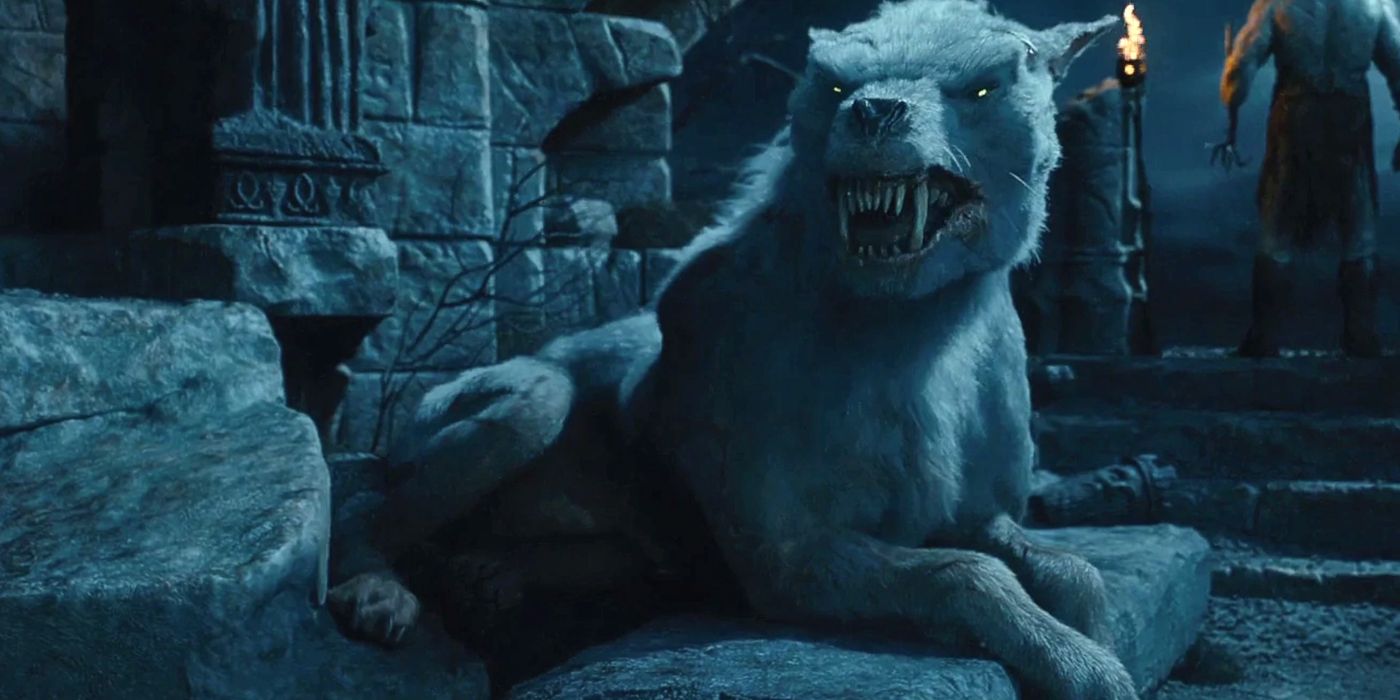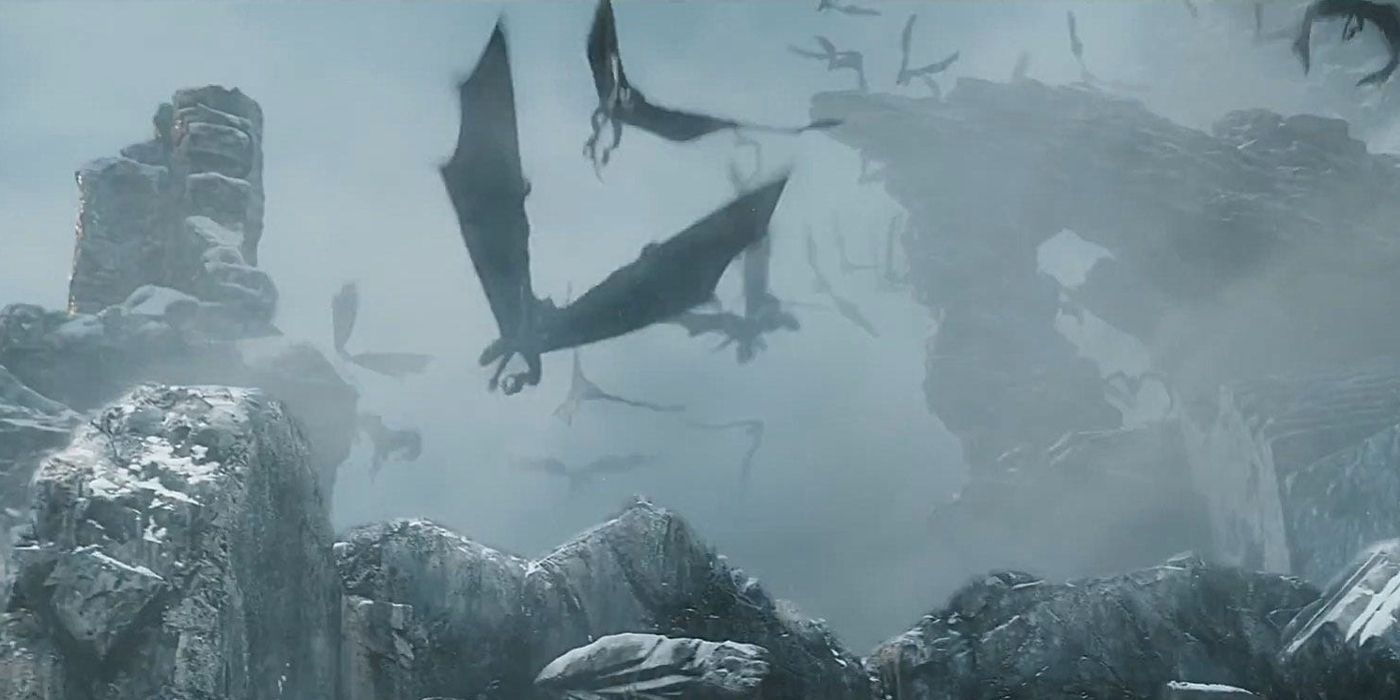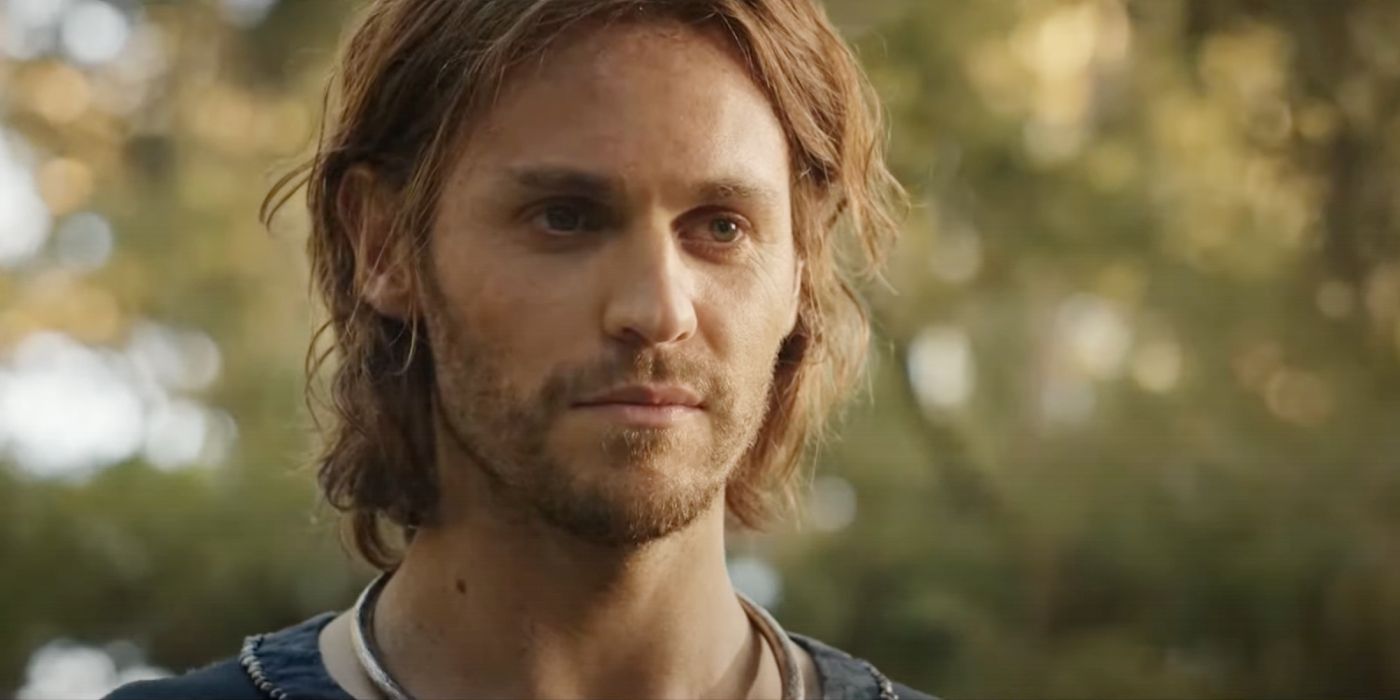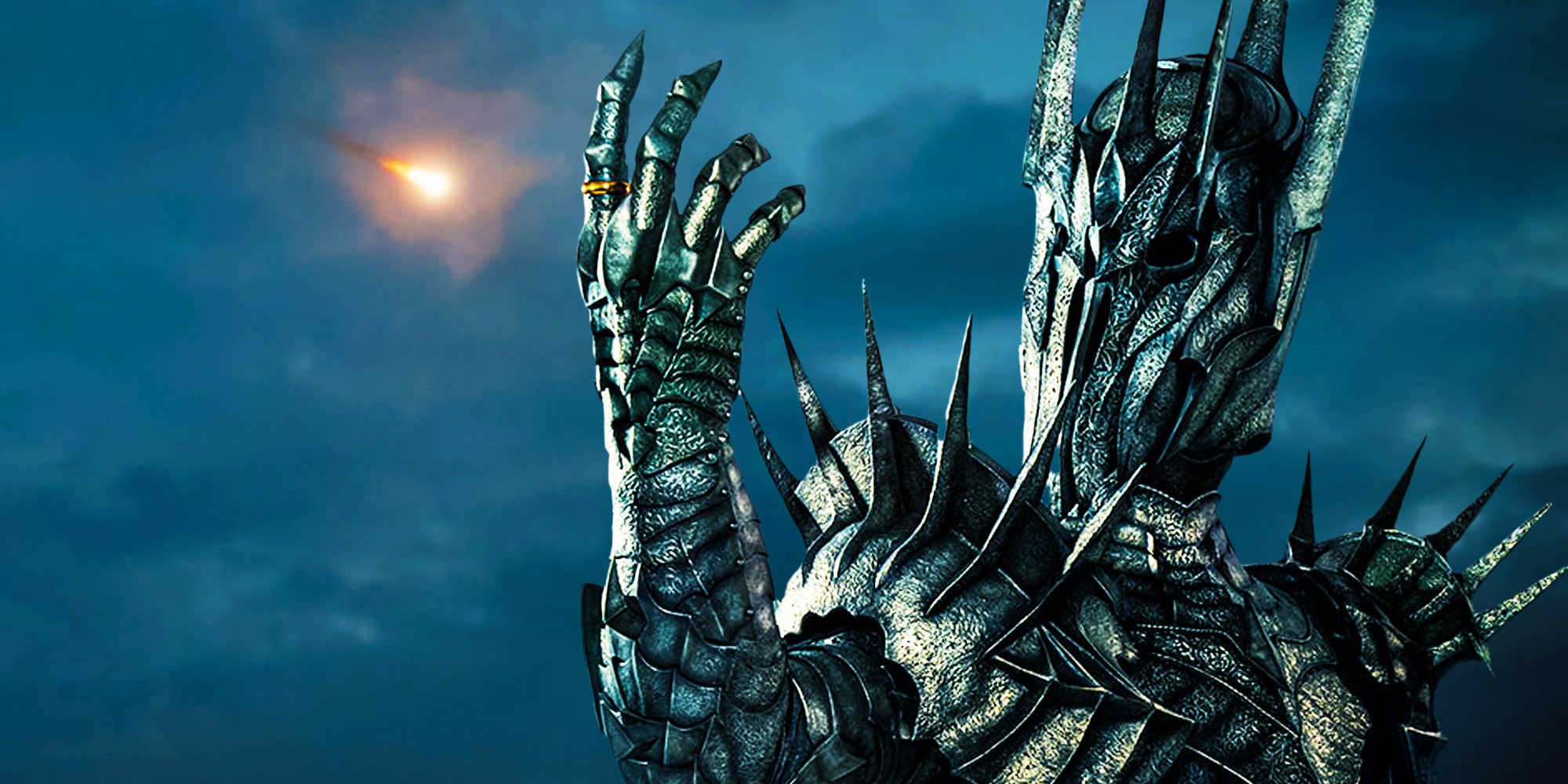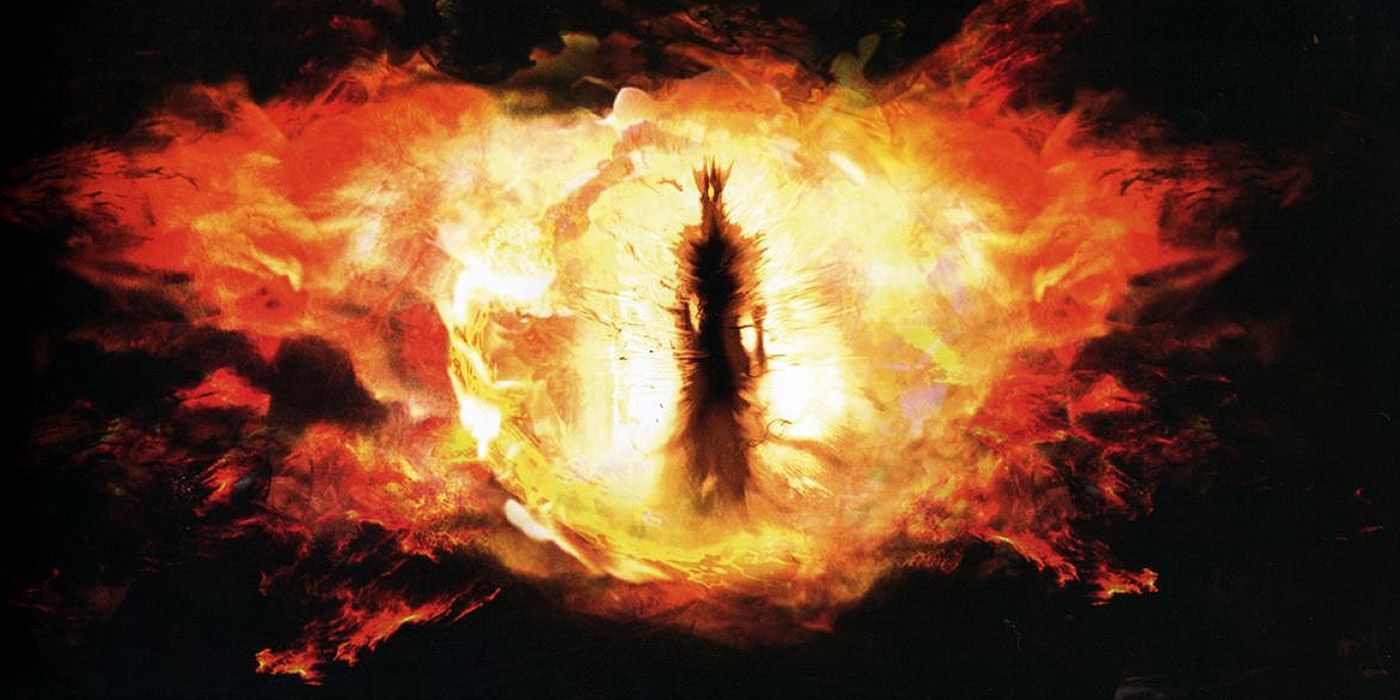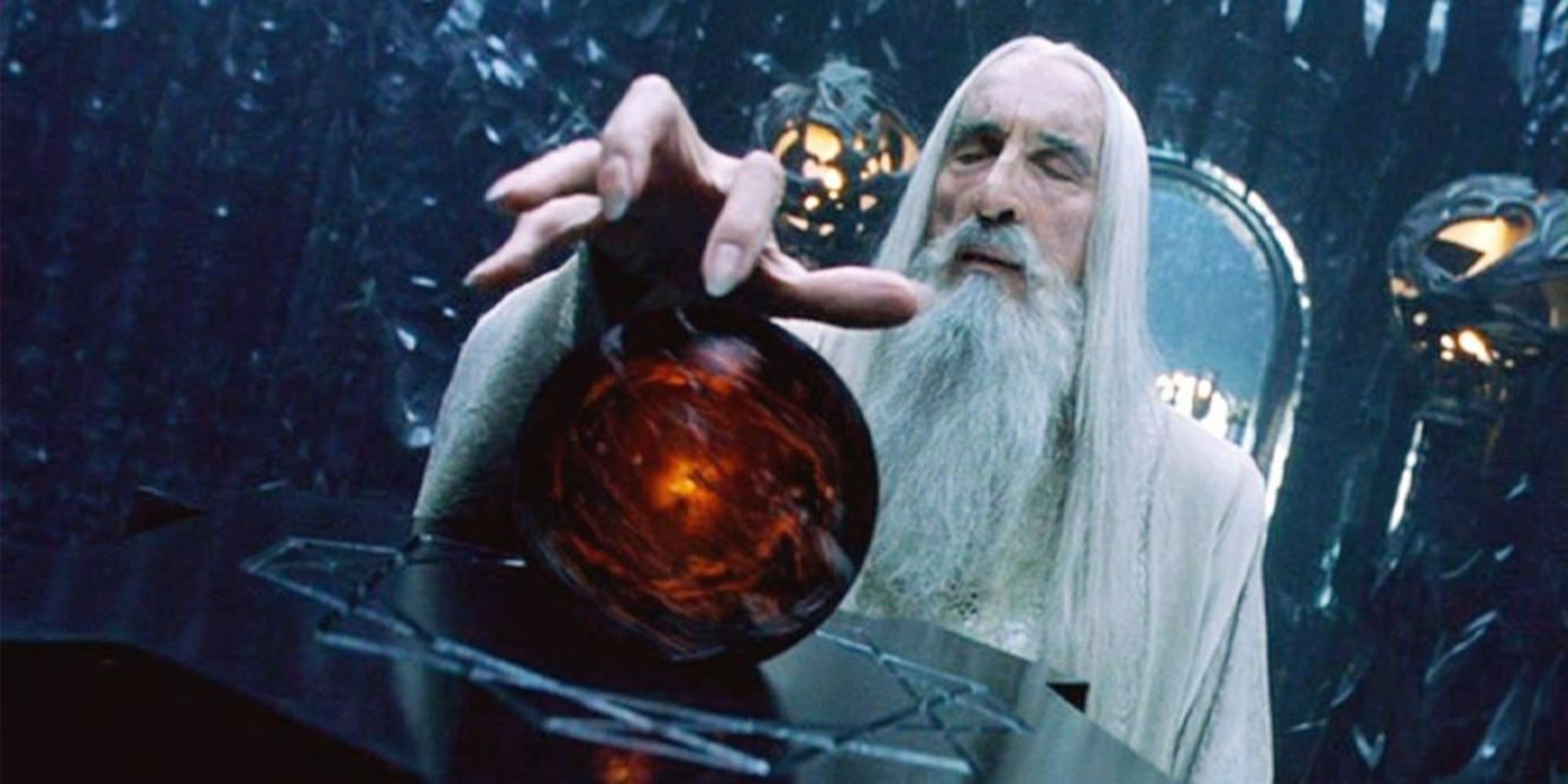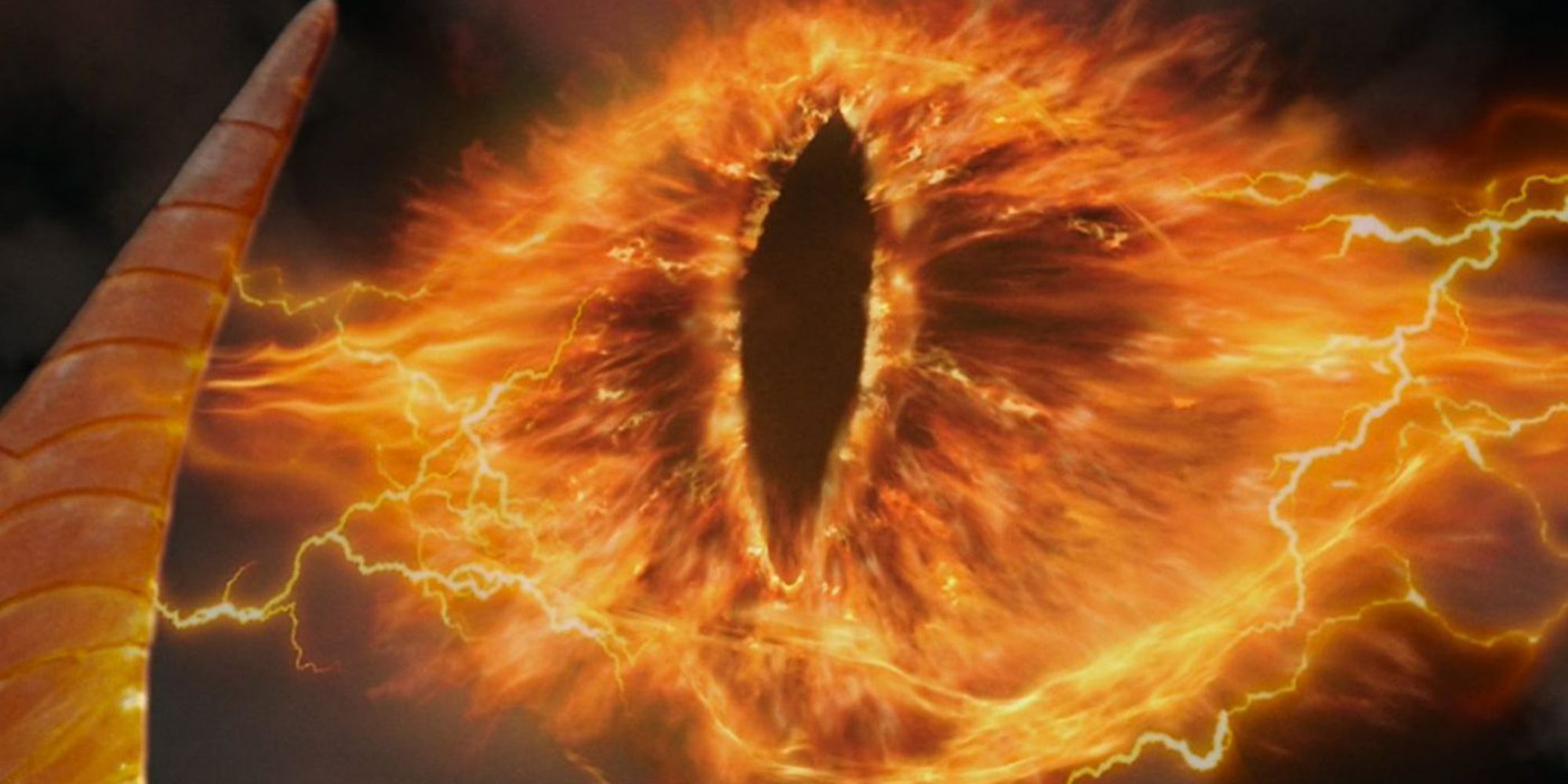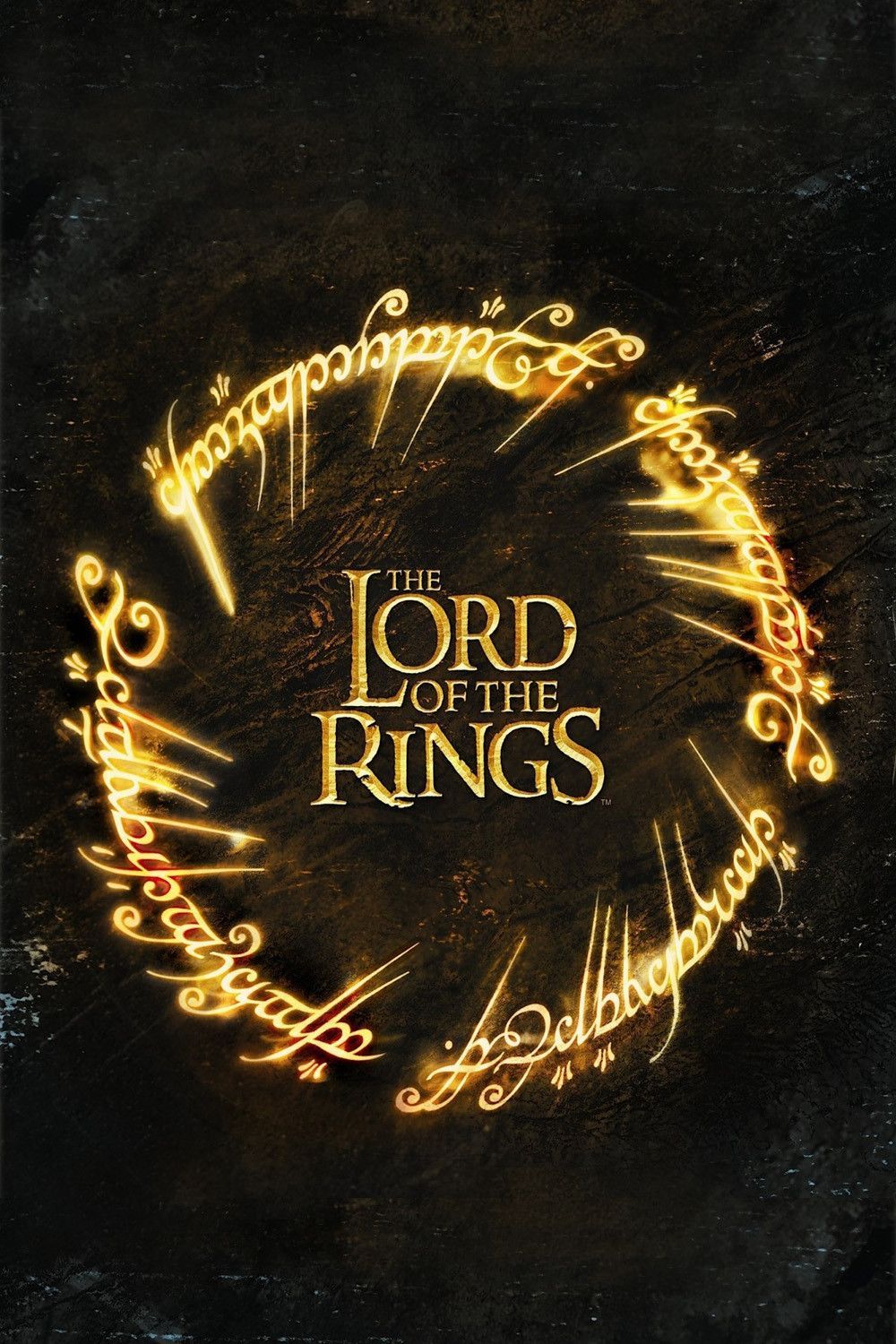Called Sauron the Deceiver by many, it’s not surprising that the Dark Lord took many forms in The Lord of the Rings. Peter Jackson’s The Hobbit and Lord of the Rings trilogy featured a version of Sauron that many fans have come to associate with the towering antagonist in J.R.R. Tolkien’s high fantasy saga, but Sauron’s Lord of the Rings movie appearance is very different from Tolkien’s description (or lack thereof) in the books. His shapeshifting abilities are one of the reasons Sauron has lasted for several ages in Middle-earth moving in the shadows of almost every important conflict between the races of Men, Elves, Dwarves, and Hobbits.
Sauron has operated as a high-ranking lieutenant of Morgoth, a successor to his empire, and a destroyer of indefatigable cities like Gondor with his hordes. One of the reasons that Sauron’s been so successful at evading defeat throughout the ages has been his ability to conceal his true form and earn the trust of his enemies. As The Rings of Power has also shown, even when he’s not yet at full strength, his most devastating form is the one hiding in plain sight.
10 Mairon
The Original Sauron Created By Ilúvatar
J.R.R. Tolkien was a devout Christian, and there are many Biblical themes that filter through into his work. The story of Sauron is rife with Biblical imagery, as his story parallels that of Lucifer Morningstar, the fallen Angel who became Satan, in many ways. This is most evidenced when analyzing Sauron’s first form — Mairon, the Maiar. Before Sauron was ever a Dark Lord and embodiment of wickedness, his original form was a Maiar associated with Aule the Smith.
Like the rest of the almost-angelic Maiar, Mairon was created by Ilúvatar as a force for goodness, peace, and order in the world that would eventually become Middle-earth. Prior to his betrayal, downfall, and becoming Sauron, Mairon was fair and handsome, with a preference for order and symmetry. However, it was his inherent disdain for chaos and anything out of place would shape his future and subsequent service to Morgoth, whom he felt shared the same perspective. Sauron would later take similar forms to Mairon during his wanderings in Middle-earth, particularly to gain the confidence and trust of Elves.
9 Sauron
The Great Evil That Forged The Ring Of Power
After becoming Morgoth’s servant, Sauron could no longer appear as Mairon or any truly pure form, and instead resembled Tolkien’s description as larger than a man “but not gigantic.”Sauron and Morgoth were both powerful but at this time, Sauron’s ability to shapeshift was constricted, and while his eyes burned and his presence radiated malice, there was no misconstruing his evil intent to subject Middle-earth to Morgoth’s sense of order.
After becoming Morgoth’s servant, Sauron could no longer appear as Mairon or any truly pure form, and instead resembled Tolkien’s description as larger than a man
“but not gigantic.
At this point, Tolkien doesn’t provide an extensive description of Sauron as an individual, but more as a manifestation of malevolence. He’d already started transcending into the force of Evil that would eventually become the Eye of Mordor. However, it’s likely he could still take a physical form of sorts, and this body probably wasn’t too dissimilar to the version of Sauron seen in the opening of The Fellowship Of The Ring.
8 The Wolf
Sauron’s Bestial Form For Combat
Mairon was forever transformed when he entered the service of Morgoth and betrayed Ilúvatar, though the power he gained came with challenges. He wasn’t yet able to maintain a physical presence in the traditional sense as he eventually would, and what’s more, his moral downfall meant he could never become Mairon again (at least not outside of visions planted in the eyes of others). While he might not have been able to make himself fair again, Sauron could transform himself into a terrifying werewolf.
Before forging the One Ring and taking the fearsome physical form seen in the war at the end of the Second Age from the prologue of The Lord of the Rings: The Fellowship of the Ring, Sauron could still make himself dangerous in combat. In his earlier years, he entered many direct confrontations in the form of a giant, snarling wolf. Only the High Elves and the Dwarves had the courage to face him when he appeared in this form, and the fortitude to try to best him in combat. As a last line of defense, the Valar used their own wolf to best Sauron — Huan, the wolfhound of Oromë the Hunter.
7 The Serpent
Sauron’s Secondary Animal Form
Judging from J.R.R Tolkien’s writings on the earliest centuries of Sauron after entering Morgoth’s service (detailed in books like The Silmarillion), Sauron’s favored form for direct confrontation was that of the wolf. However, this wasn’t the only animal form Sauron could take. The future Great Evil was cunning, and his physical form was malleable. He knew that keeping his enemies on their tools would sew confusion and discord – powerful weapons in a prolonged conflict — and having a variety of different forms was one of many ways he achieved this.
During the many conflicts between Morgoth and the united armies of Men, Elves, and even the Valar, Sauron began to change his appearance to win battles. The wolf may have been the most common shape taken by Sauron and the one the first Elves and Dwarves to resist him saw most, but he became other nightmarishly large animals too. Prior to Morgoth’s defeat during the First Age, one of the many other forms Sauron took was a giant serpent. This form of Sauron wasn’t mentioned by Tolkien as the great wolf, however, so it’s likely it didn’t appear as often.
6 The Vampire
A Form Of Sauron That Showed His Kinship With Evil
Firstly, it should be noted that Sauron isn’t a vampire. He took the form of one on multiple occasions, but the Lord of Mordor was merely imitating their shape, and at no point in the history of Middle-earth did was he a bloodsucking creature of the night. Vampires do exist in J.R.R Tolkien’s mythos, but not in the same sense as Dracula, Nosferatu, or other vampires from pop culture.
In Tolkien’s Middle-earth, vampires are large bat-like creatures in service to Morgoth and Sauron, with one in particular, Thuringwethil, being referenced in the annals of Arda. During the travels of Beren and Lúthien recorded in The Silmarillion, it’s said that Sauron himself took the form of a vampire on at least one important occasion. However, despite Sauron’s propensity to engage in psychological warfare with his foes, his vampire form wasn’t to strike fear but to flee Huan.
5 Annatar/Halbrand
Sauron The Deceiver At His Most Deceptive
Sauron was an incredibly dangerous presence on the battlefield, though this wasn’t the only reason he became so feared or rose to power so quickly. There are many reasons he earned the moniker Sauron the Deceiver, and this is most evidenced by him taking the form of the human King named Halbrand, or (depending on the occasion) the Elf named Annatar. In order to gain the trust of Celebrimbor in the City of the Elven Smiths and trick him into forging the Rings of Power, Sauron needed a disguise that would not only fool others but be pleasing to the eye.
To do this, he became Annatar “Lord of Gifts”. The Lord of the Rings: The Rings of Power changes the timeline slightly when it comes to this form, and instead has Sauron take the the form of Halbrand (played by Charlie Vickers) and pose as a displaced King of the Southlands and deceive Galadriel and the Numenoreans in Season 1. By giving the Elves the “gift” of how to bind mithril with other ore, he convinces them to aid their own impending doom.
4 Sauron’s Physical Form
The Hulking Armored Form That Destroyed Númenor
Sauron’s physical form that emerged towards the end of the Second Age of Middle-earth was the first glimpse cinema audiences got of the character in The Lord of the Ring: The Fellowship of the Ring. It’s somewhat surprising for many to learn that, of all Sauron’s forms, this is one of the shapes taken by the Deceiver that J.R.R Tolkien wrote about the least (and, considering he’s an author who famously wrote at least a page describing a single tree on one occasions, this says a lot).
Tolkien doesn’t go into great depth about what Sauron looked like underneath his armor after he destroyed Númenor. However, LotR director Peter Jackson gave a visual shape to this form of Sauron. Visually, Jackson wanted Sauron to look impressive and intimidating, and his fearsome appearance seen on the battlefield in front of Mount Doom has made him an iconic cinematic villain. At this point, Sauron’s physical form resembled pure evil and darkness beneath the intimidating armour he wore into battle when he was defeated in the Last Alliance of Elves and Men, when Isildur was able to cut the One Ring from his finger.
Visually, Jackson wanted Sauron to look impressive and intimidating
3 The Necromancer
Sauron’s Disguise While Rebuilding His Power In The Third Age
The Necromancer is one of the most intriguing forms of Sauron, as J.R.R Tolkien didn’t initially envision the primary antagonist of The Hobbit to be the same villain that had plagued Middle-earth since the First Age. It wasn’t until writing The Lord of the Rings trilogy and integrating The Hobbit with his wider mythos that Tolkien weaved The Necromancer into the canon as a form of Sauron the Deceiver.
After laying dormant for years, Sauron began his restoration in the Third Age, taking a form simply known as The Necromancer. Gandalf began to suspect that the Dark Lord had taken up residency in Dol Guldur, known to many as the Hill of Dark Sorcery but the White Council didn’t listen to him about Sauron’s return and the sudden concentration of dark energy. This stronghold was not only Sauron’s base of operations but Gandalf’s eventual prison, and not even Galadriel, Elrond, and Saruman could weaken The Necromancer enough to prevent him from becoming more powerful.
A key source of confusion with Sauron’s form as The Necromancer comes from the fact that Tolkien never directly mentions the Deceiver practicing Necromancy. In fantasy settings, Necromancy is a specific kind of magic pertaining to raising the dead. At no point in any of his books, however, did Tolkien ever reference Sauron raising the dead or controlling spirits as The Necromancer.
2 Sauron’s Restored Form
The Hidden Physical Form Of The Great Eye
When Sauron is partially restored in the Third Age, he doesn’t appear in the sharp, jagged armor from the beginning of Jackson’s films, and sends emissaries like the Mouth of Sauron to speak for him. It’s easy to presume that, at this point, Sauron is only capable of manifesting in Middle-earth as the Great Eye that sits atop Barad-dûr. However, this isn’t technically the case. Sauron could still take a physical form when he needed to during this time, but seems to choose not to.
He is only described briefly by those who have interacted with him, such as when he personally tortured Gollum in 3017, who stated that “he has only four [fingers] on the Black Hand, but they are enough.” Sauron was significantly weakened after being defeated by Isildur, so it’s entirely possible that he would be vulnerable in a physical body without possession of The One Ring by the time Frodo came to possess it. It’s suggested in The Return of the King novel that Sauron would have appeared to claim victory after the War of the Ring had he triumphed, implying that at some point, the Great Eye could have taken a more corporeal form.
1 The Eye Of Sauron
The Great Eye That Watches Over Mordor
Of all the forms of Sauron, it is the Great Eye that most viewers are familiar with due to its iconic presence in The Lord of the Rings movie trilogy. For most of Jackson’s Lord of the Rings movies, Sauron appeared as the great lidless, fiery eye whose gaze could penetrate every inch of the ashen volcanic fields of Morder and see far beyond their borders too. Known as the Eye of Sauron, this form of Sauron sat above Barad-dûr, the stronghold of Mordor, tracking the movements of anyone who crossed the shadowlands.
Samwise and Frodo had to be particularly careful moving through Mordor on their way to Mt. Doom because the closer they got to the Eye of Sauron, the more it could sense their presence, and if Frodo ever used the ring that close to the Dark Lord, he would send his Nazgûl after them and, in their weakened state, they would not have survived. Sauron took many forms prior to the events of The Lord of the Rings, but his final one remains the most iconic.



